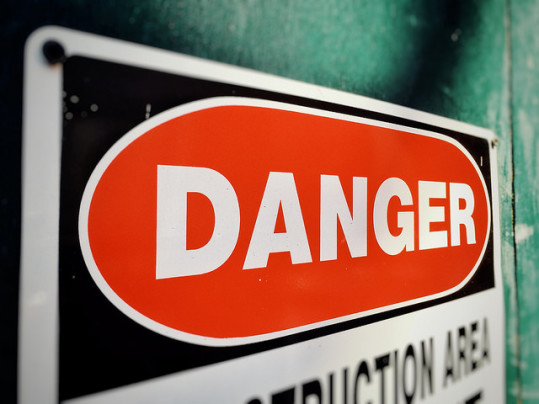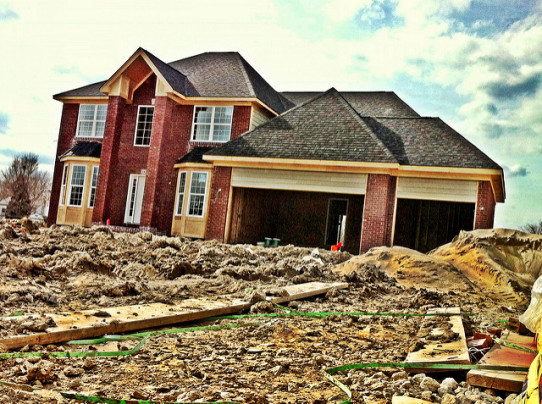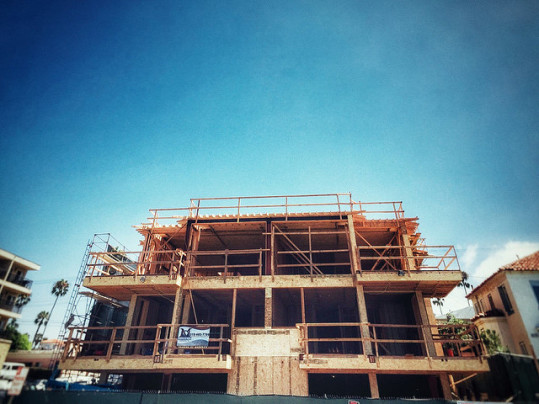The U.S. Department of Housing and Urban Development’s monthly Housing Scorecard collects key market data and the results of the federal government’s foreclosure mitigation programs in an effort to provide a monthly snapshot of how the housing market is doing. Home sales and prices, foreclosure starts and completions, prices, equity, and mortgage modification numbers are among the topics commonly covered in the report. Recently released, the February scorecard finds a number of encouraging signs. For example, sales of previously owned homes rose to their second highest pace since 2007 at the beginning of this year and were 11 percent higher than one year earlier in January. Home prices were also up to start the year. According to Federal Housing Finance Agency numbers, home prices have shown a 5.6 percent increase year-over-year for the past six months and are now nearly 30 percent higher than at their low point in 2011. New home sales, on the other hand, fell, dropping 9.2 percent in January from December’s figure. As always, the report cautions that – despite encouraging signs that the housing market has recovered – there is still work to be done to boost home sales, help homeowners who remain underwater, and continue to reduce mortgage delinquency rates. More here.
Archive for March 2016
Misinformation Keeps First-Time Buyers Away
Before the housing crash, first-time home buyers typically accounted for 40 percent of home sales in any given year. Last year, that same group accounted for just 32 percent of buyers. And yet, the Harvard Joint Center for Housing Studies expects the country’s 86 million millennials – along with other first-time buyers – to form about 1.2 million new households per year for the next 10 years. Danny Gardner, Freddie Mac’s vice president, wrote recently that the gap between pent-up demand and actual home buyers can be explained, in part, by persistent misunderstandings about how the buying process works, what it takes to be approved for a loan, and how much is needed for a down payment. “Information is part of the answer,” Gardner wrote. “We have to drive a stake through a few stubborn myths that are draining life out of the market. These familiar myths lead potential buyers to overestimate the credit, income, and down payment savings they need for an affordable mortgage.” Among the mistaken beliefs that may be keeping young Americans out of the market, believing that they need a 20 percent down payment is a big one. In fact, new programs allow qualified buyers to purchase a home with as little as 3 percent down and 40 percent of buyers put down less than 10 percent. Other common buyer misconceptions include, feeling their credit score is inadequate, the process is too complicated, and a previous rejection will prevent them from being approved again. More here.
Single Family Housing Starts Hit 8-Year High
A spike in the number of single-family homes that broke ground in February pushed new home construction levels to their highest point in more than eight years. The 7.2 percent surge passed economists’ expectations and represents a significant rebound following a slow January. The estimates, from the U.S. Census Bureau and the Department of Housing and Urban Development, are good news for the housing market, as more new homes being built should help alleviate upward pressure on home prices by providing much needed for-sale inventory. Building permits, on the other hand – which are a good indication of how many new homes will be built in coming months – were relatively flat from the month before, rising just 0.4 percent over January’s figure. Still, with new-home construction reaching its highest point since November 2007 and a stronger job market leading to increasing household formation, the outlook is positive. Home prices have been rising over the past few years due, in part, to the fact that many markets are seeing heavy buyer demand but fewer homes for those buyers to choose from. In those markets, an increasing number of new homes should help moderate price increases and give buyers more options and negotiating power. Regionally, single-family housing starts surged in the West and Midwest, were flat in the South, and dropped 12.5 percent in the Northeast where harsh winter weather has been more of a factor. More here.
Average Mortgage Rates Rise But Remain Low
According to the Mortgage Bankers Association’s Weekly Applications Survey, average mortgage rates increased last week from the week before. In fact, rates were up across all loan categories including 30-year fixed-rate mortgages with both conforming and jumbo balances, loans backed by the Federal Housing Administration, and 15-year fixed-rate loans. Though still low by historical standards, mortgage rates have moved upward two consecutive weeks and the increases have led to a slowing of refinance activity. Last week, refinance demand fell 6 percent. Lynn Fisher, MBA’s vice president of research and economics, told CNBC rates have returned to levels last reached at the beginning of the year. “Financial market volatility subsided last week, allowing rates to increase to levels last seen in January,” Fisher said. “Even though mortgage rates have remained below 4 percent, the appetite to refinance has consistently declined over the last month. Relatively low rates should continue to assist the purchase market.” Purchase demand, however, was flat from the week before, rising just 0.3 percent. Still, demand for loans to buy homes is now 33 percent higher than it was at the same time one year ago. The MBA’s weekly applications survey has been conducted since 1990 and covers 75 percent of all retail residential mortgage applications. More here.
Builder Confidence Holds Firm In March
The National Association of Home Builders’ Housing Market Index measures builders’ confidence in the market for newly-built single-family homes on a scale where any number above 50 indicates that more builders view conditions as good than poor. In March, the index was unchanged from the month before but remained at a high level, holding firm at 58. David Crowe, NAHB’s chief economist, said the March reading is in line with the group’s forecast for 2016. “While builder sentiment has been relatively flat for the last few months, the March HMI reading correlates with the NAHB’s forecast of a steady firming of the single-family sector in 2016,” Crowe said. “Solid job growth, low mortgage rates and improving mortgage availability will help keep the housing market on a gradual upward trajectory in the coming months.” Of the three index components gauging buyer traffic, sales expectations for the next six months and current sales conditions, only current buyer traffic saw an increase, rising four points from the month before. Also in the release, three-month moving averages show the Midwest gaining a point, the South flat, and the West and Northeast declining from the month before. However, every region but the Northeast remains above 50, with the West leading all other regions with a March reading of 69. More here.
True Value: How A Home’s Worth Is Determined
When a home is appraised, the appraiser sizes up the property’s features and, based on similar houses that have recently sold in the area, determines the current value of that particular property. Because they are professionals who are evaluating properties every day, appraisers are among the first to recognize price fluctuations in the local real-estate market. This may account for the gap commonly found between a home’s appraised value and the current homeowner’s expectation of what their home is worth. Naturally a homeowner who is looking to sell or refinance their home will hope their appraisal comes in as high as possible and, because of this, homeowners will often overestimate the value of their property. In fact, according to a recently released survey, homeowners overestimate their homes’ value by an average of 2 percent. It isn’t always bad news, however. According to the survey, homeowners in some cities actually underestimate the value of their home. Denver, San Francisco, Dallas, Portland, Boston, Los Angeles, Miami, and Las Vegas were among the cities where appraised values exceeded homeowner expectations. More here.
Home Equity Continues To Improve
When homeownership is discussed as a way to build wealth, what is really being talked about is equity. Equity refers to the value of a property minus the amount still owed on the mortgage. A homeowner will gain equity when home prices increase and also as they pay off their mortgage. In other words, equity is the part of a property’s value that belongs to the owner. If they sell that house, that money is their’s. Naturally, increasing equity is a good thing for current homeowners and among the main motivating arguments for homeownership. After all, when you pay rent, that money’s gone forever. In recent years, rebounding home prices have led to significant gains in home equity. For example, CoreLogic’s Q4 2015 Equity Report found home equity up 11.5 percent over the same period the year before. It was the 13th consecutive quarter of double-digit improvement. Anand Nallathambi, CoreLogic’s president and CEO, said the number of homeowners with more than 20 percent equity is rising rapidly. “Higher prices driven largely by tight supply are certainly a big reason for the rise, but continued population growth, household formation, and ultra-low interest rates are also factors,” Nallathambi said. “Looking ahead in 2016, we expect home equity levels to continue to build, which is a good thing for the long-term health of the U.S. economy.” More here.







